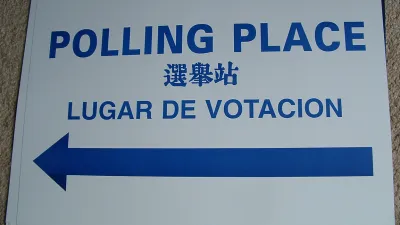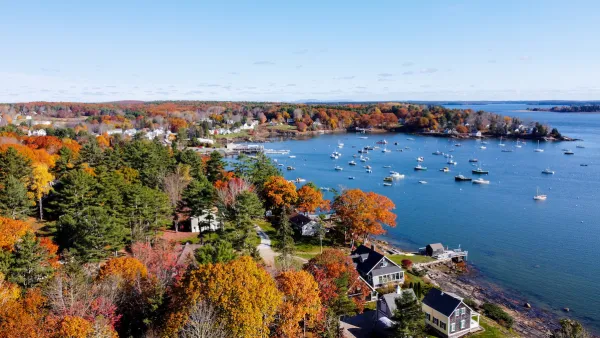Urban densities tend to encourage more liberal, tolerant values. Living among diverse neighbors can reduce fear and resentment, as everyday interactions break down stereotypes and misconceptions of ‘the other.’

Neeraj Bhatia, founder of The Open Workshop and assistant professor at the California College of the Arts, introduces an article titled "Environment as Politics":
One lesson of the U.S. presidential election is that we should forget about red and blue states, North and South, coastal coffeeshops and heartland diners. The geographic divide in American politics is closer to home. If you want to predict how someone will vote, ask, How near are your neighbors?
In the recent U.S. election, 49 of the 50 highest density counties voted for Hillary Clinton, and 48 of the 50 lowest density counties chose Donald Trump (nearly the same split as for Barack Obama and Mitt Romney four years earlier).
There are reasons for this that go beyond identity politics. Urban density has social and economic advantages that make cities attractive to liberals and that also condition liberal values over time. Living among diverse neighbors can reduce fear and resentment, as everyday interactions break down stereotypes and misconceptions of ‘the other.’ (Which is not to ignore that cities have their own problems with racial and economic segregation.
FULL STORY: Environment as Politics. New drawings of the relation between residential density and voting behavior.

National Parks Layoffs Will Cause Communities to Lose Billions
Thousands of essential park workers were laid off this week, just before the busy spring break season.

Retro-silient?: America’s First “Eco-burb,” The Woodlands Turns 50
A master-planned community north of Houston offers lessons on green infrastructure and resilient design, but falls short of its founder’s lofty affordability and walkability goals.

Delivering for America Plan Will Downgrade Mail Service in at Least 49.5 Percent of Zip Codes
Republican and Democrat lawmakers criticize the plan for its disproportionate negative impact on rural communities.

Test News Post 1
This is a summary

Test News Headline 46
Test for the image on the front page.

Balancing Bombs and Butterflies: How the National Guard Protects a Rare Species
The National Guard at Fort Indiantown Gap uses GIS technology and land management strategies to balance military training with conservation efforts, ensuring the survival of the rare eastern regal fritillary butterfly.
Urban Design for Planners 1: Software Tools
This six-course series explores essential urban design concepts using open source software and equips planners with the tools they need to participate fully in the urban design process.
Planning for Universal Design
Learn the tools for implementing Universal Design in planning regulations.
EMC Planning Group, Inc.
Planetizen
Planetizen
Mpact (formerly Rail~Volution)
Great Falls Development Authority, Inc.
HUDs Office of Policy Development and Research
NYU Wagner Graduate School of Public Service




























